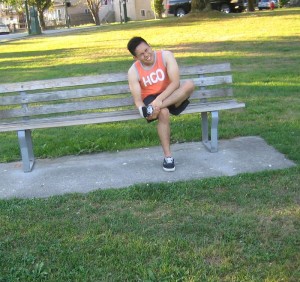It is a known fact that your foot is comprised of bones, joints and tendons. The biggest bone in your foot is the heel. Due to injury or overuse, you might experience heel pain. This type of pain can range from mild to severe. In most cases, individuals who experience heel pain would require a doctor to diagnose the cause.

Causes of heel pain
Heel pain has several causes that are usually connected with overuse of the heel bone. Strain on the heel can be inflicted by pounding your feet on hard surfaces, wearing shoes that do not fit well and being overweight.
Take note that these strains can irritate the heel bone and the surrounding muscles and tendons. Other common causes of heel pain include:
- Heel spurs – develop once the lining covering the heel is stretched continuously, resulting to the breaking off of the pieces of the lining. This occurs in athletes who regularly jog or run as well as those who are obese.
- Excessive pronation – occurs once the ligaments and tendons at the back of the heel are overly stretched.
- Plantar fasciitis – develops once the tissue that connects the heel to the ball of the foot becomes inflamed.
- Achilles tendinitis – occur once the Achilles tendon becomes inflamed.
When to call a doctor?
If the heel pain develops, home remedies and rest can help ease the symptoms. In case the pain does not go away within 2-3 weeks, it is best to consult your doctor. It is important to call your doctor right away if:
- Pain is severe
- Pain abruptly starts
- There is redness in the heel
- The individual could not walk due to the pain
- There is swelling in the heel
How to treat heel pain
If an individual develops heel pain, there are first aid measures that you can perform at home to ease the discomfort.
- Allow the individual to rest as much as possible
- Application of ice to the affected heel for 10-15 minutes two times in a day
- Wearing shoes that properly fit
- Provide over-the-counter pain medications to the individual
- Wear night splints – it is a special device that stretches the foot while the individual is sleeping
- Utilize heel cups or shoe inserts to minimize the pain
In case these first aid measures at home could not provide relief to the pain, it is best to see your doctor. A physical exam will be performed and even an X-ray to determine the cause of the heel pain. Once your doctor has determined the cause of the pain, the appropriate treatment is provided.
Treatment for heel pain
In most cases, your doctor will recommend physical therapy. This will help strengthen the muscles and tendons in your foot in order to prevent further injury. For severe pain, anti-inflammatory medications are prescribed that can be taken by mouth or injected into the foot.
Your doctor might also recommend providing support to the affected foot either by wearing special footwear devices or taping the foot.
